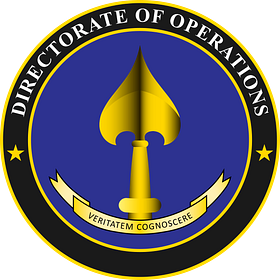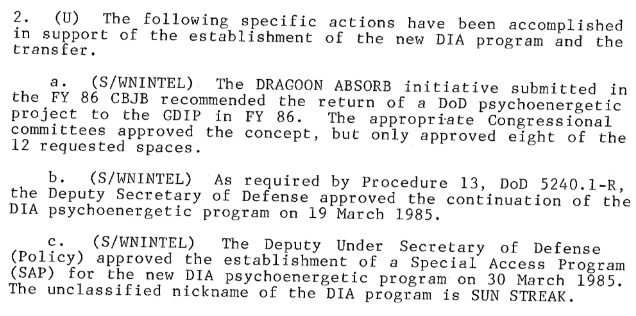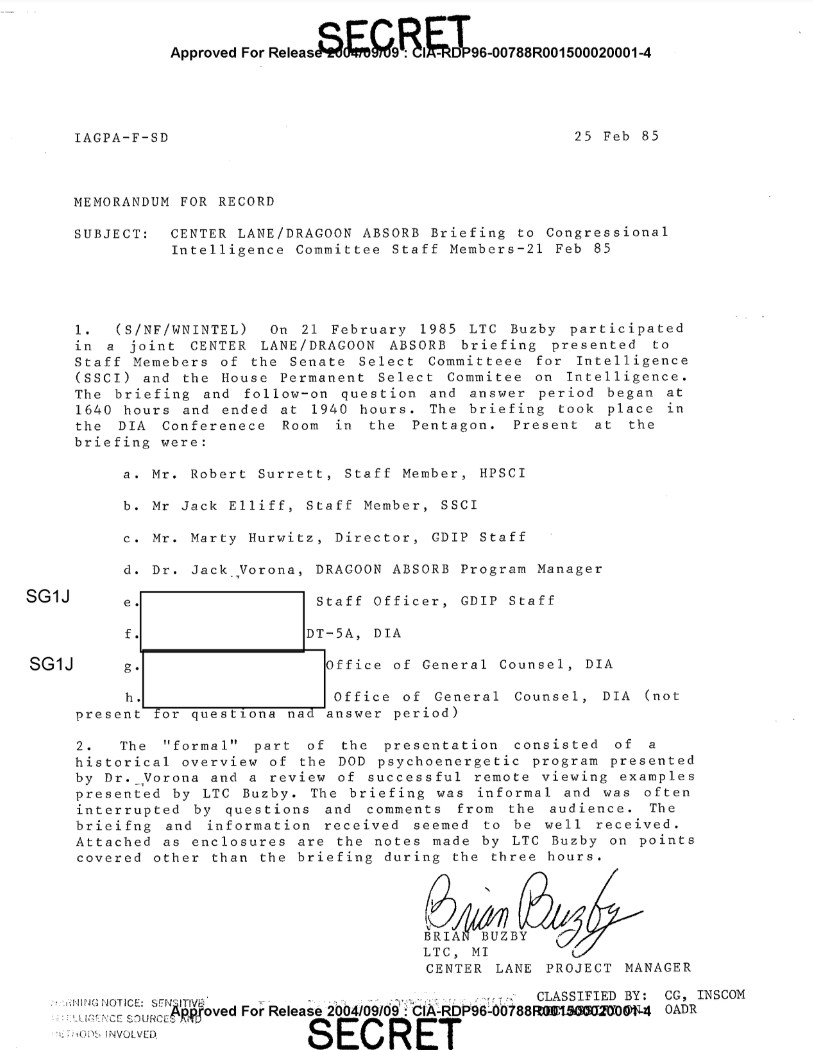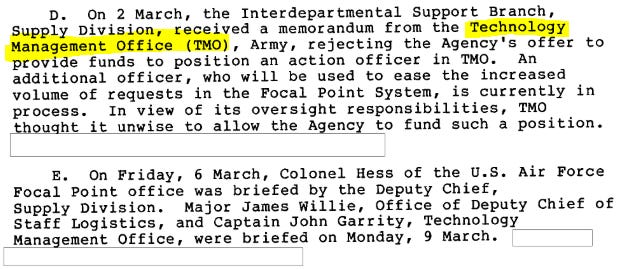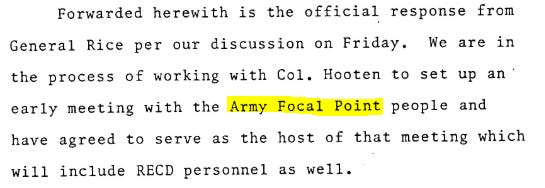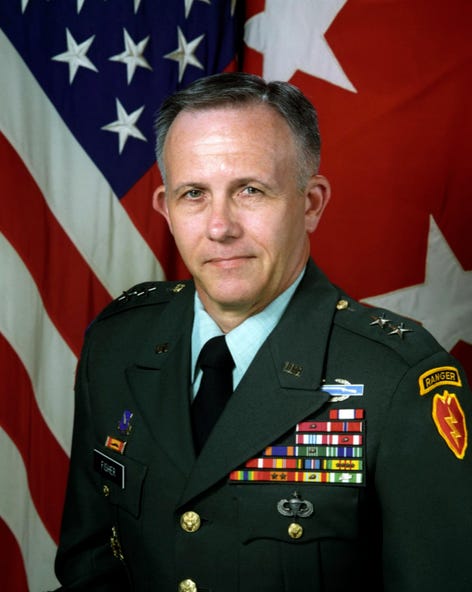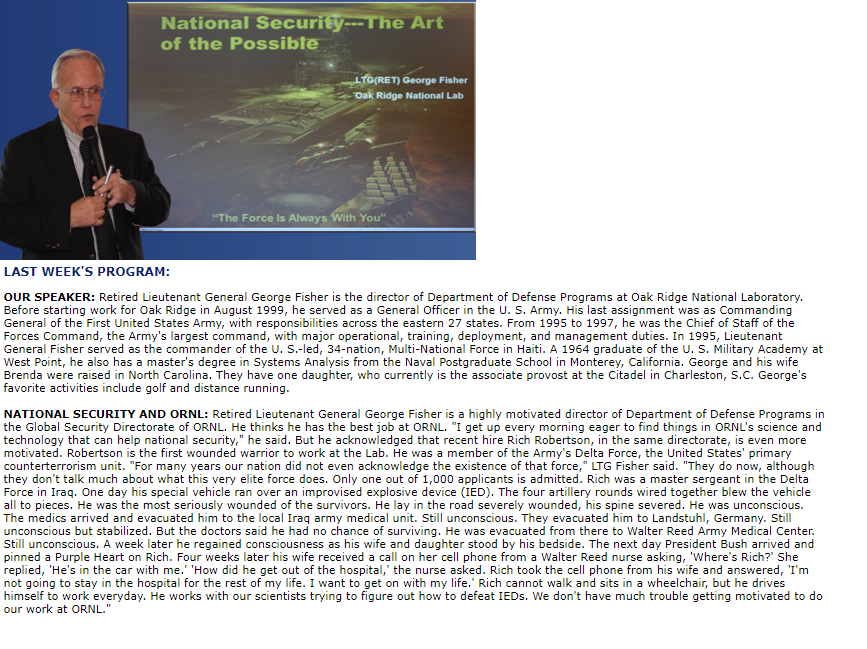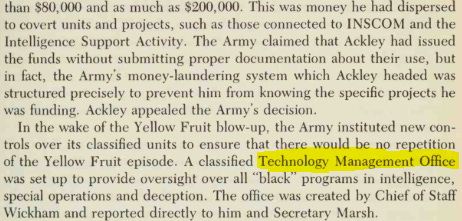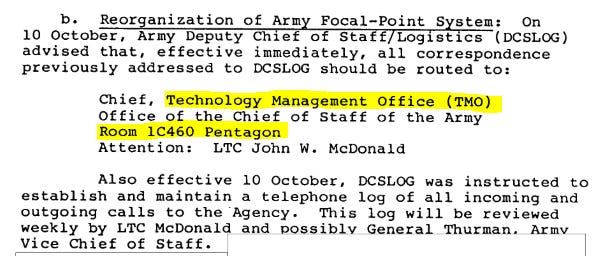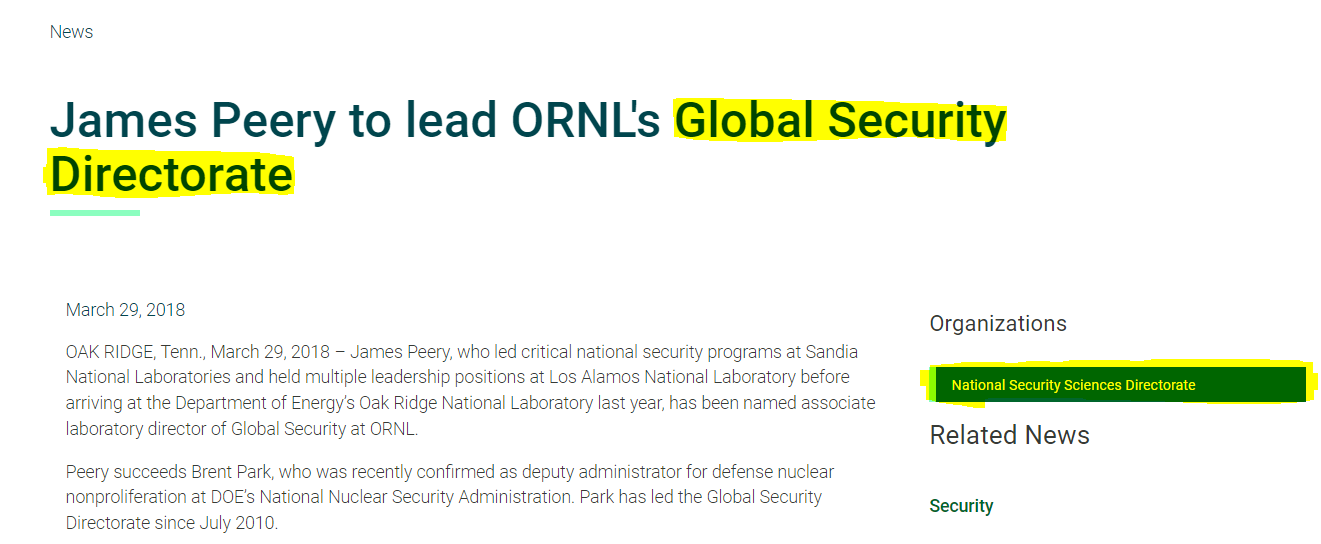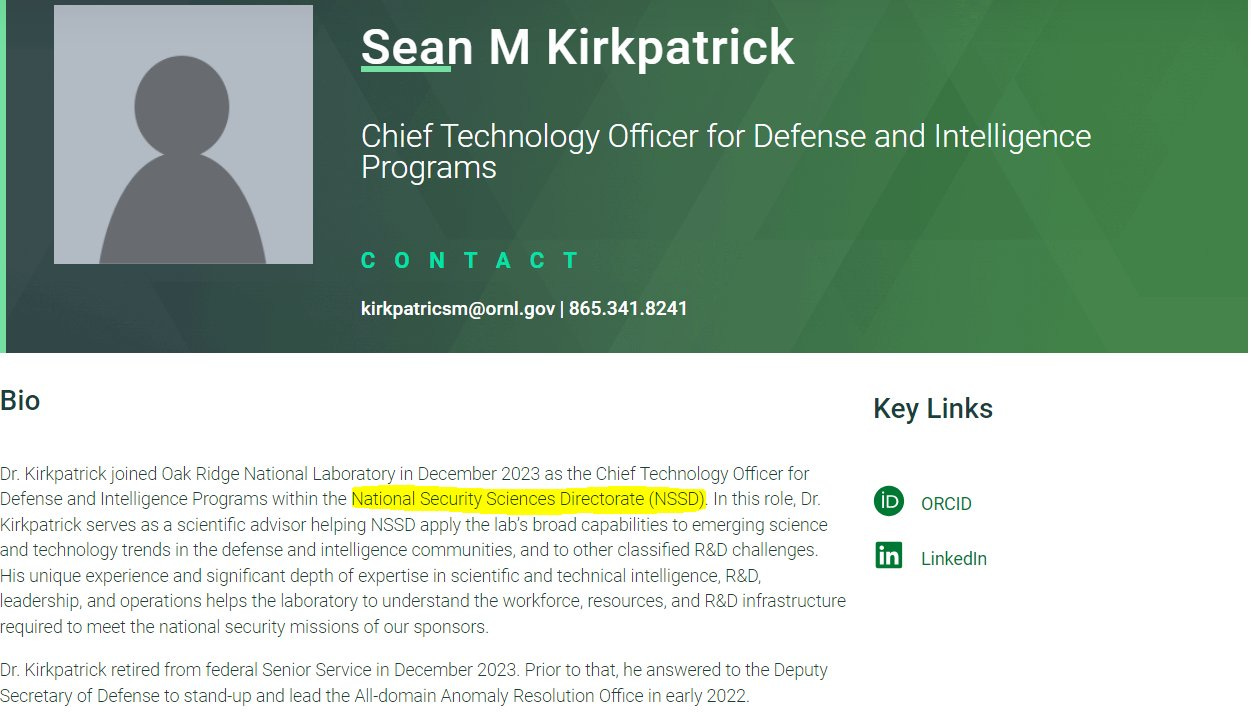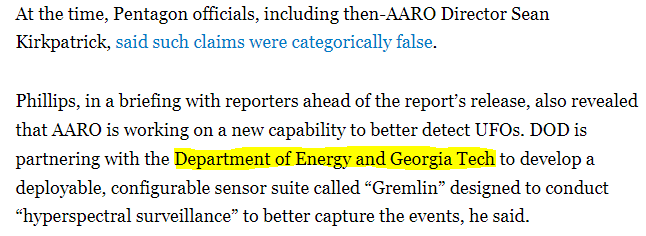In this installment of the series 'Ticking Time Bomb: The Shadowy World of UAP Programs’, we delve into the organizational structures of agencies overseeing programs involving exotic technology and UAP, with a particular focus on the Technology Management Office.
TMO
Following my previous entry's initial investigation and report on Source 0's testimony, I was particularly intrigued by Source 0's reference to working in the basement Pentagon office known as the TMO (Technology Management Office). It was claimed that they dealt with SAPs (Special Access Programs) and USAPs (Unacknowledged Special Access Programs) related to exotic technologies there.
Ticking Time Bomb: The Shadowy World of UAP Programs - Introduction
Information on this supposed office is sparse but not impossible to find. Interestingly enough, much of the documentation on TMO comes from the CIA reading room.
Exhibit A: Center Lane/Dragoon Absorb
One of the first documents where TMO is mentioned concerns the Center Lane SAP under US Army INSCOM control, which was later transferred to a new SAP within the DIA.
The Center Lane program under INSCOM was a DoD psycho-energetic program involving remote viewing and telepathy, continuing practices developed by SRI (Stanford Research Institute) in the 70s. Notably, a recent study from last year has drawn renewed interest in this field.
A noteworthy point in the CIA document is the inclusion of the INSCOM HUMINT office in a memorandum to this status report. Does this suggest that PSI intelligence abilities are categorized as HUMINT within the USG?
This connection could align with previous reports on "Blue Border" and why UFO whistleblower David Grusch might be cautious about disclosing certain HUMINT information.
"Blue Border"
Furthermore, this document highlights that the Dragoon Absorb initiative (the official name for transferring the Center Lane program to the DIA) was presented to staff of the Senate Intelligence and House Intelligence Committees and approved by Congress.
The presentation of this program to staff (albeit only 2 staff across both committees) is confirmed in this document.
The last page of the Center Lane document includes significant handwritten notes about the efficacy of PSI within the existing Center Lane program at INSCOM/CIA. These notes appear to guide presenting the findings of the Center Lane program to a higher-up DoD official to gain approval for the program's continuation and transfer. Key points from these notes include:
Demonstrate for him that Product helps Intell w/o Nuts & Bolts how
examples need to be concrete
Key demonstrate it works
Exhibit B: "Focal Point"
Another mention of TMO within CIA documentation is this weekly report from 1987.
The TMO is mentioned alongside something called the 'Focal Point System' within the US Army. Interestingly, the USAF has its own Focal Point Office. Is this name alignment indicative of some sort of information-sharing/centralized network for specific types of requests related to sensitive programs?
A place where both 'Focal Point' and TMO come up again is in this CIA document referring to a situation where the CIA was upset about some loss of funds related to US Army support for CIA programs. The reply to this situation is from Major General W. H. Rice, the Director of the Joint Special Operations Agency.
Major General W. H. Rice mentions that records within the TMO office were reviewed, suggesting that the program in question was managed through there in some capacity. This letter from the Joint Special Operations Agency is noteworthy as the agency later became the Joint Special Operations Command (JSOC). JSOC is mentioned as being involved with Crash Retrievals (along with the CIA Office of Global Access) in this article from last year.
https://x.com/JoshTBoswell/status/1729519539363410039
Exhibit C: Private Industry Pipeline
Another document that has mention of TMO is this report from 1988, which discusses changes in the supply group structure and activities.
Within this excerpt, we find an unredacted name: Colonel Fisher, the head of TMO at the time. This is key for tracking and understanding the affiliations and career trajectory of key personnel involved in TMO, especially if this office is connected with the USAPs that Source 0 mentioned.
Colonel Fisher was appointed director of the Technology Management Office in 1988 and held this position until 1990. Upon leaving TMO, he was promoted to Brigadier General, and by 1993, he was a Major General commanding the 25th Infantry Division. From 1995 to 1997, he served as Chief of Staff for the Army's Forces Command. In 1997, he was promoted to Lieutenant General and commanded the First United States Army until his retirement in 1999. Notably, the next commander after Fisher was John M. Riggs, who later headed up the "Objective Force," likely coordinating with the TMO for Science & Technology programs.
After retirement, General Fisher took a position as Director of Advanced Technologies - Eastern Region within Lockheed Martin's recently formed Energy Systems division. This division emerged from the Martin Marietta/Lockheed merger and managed Oak Ridge National Laboratory from 1996 to 2000. Interestingly, Fisher's work email provided in a west point class of 1964 article was for ORNL (Oak Ridge National Lab), but things get strange from there.
Fisher stated his reason for accepting the position was to "help leverage the scientific and technological power of the 'Manhattan Project' to the advantage of the private sector."
Another perplexing point from the West Point article was that both his house and Lockheed Martin Energy Systems were listed at a residential address (he no longer lives there if he ever did in the first place, as it was sold in 2010). Fisher mentioned living in Atlanta and building a home in the area, which is over three hours from ORNL by car, suggesting he wasn't commuting daily. How then did he hold a high-level position within the lab?
According to Wikipedia, Fisher worked at Lockheed Martin Energy Systems at ORNL from 1999 to 2012, but this does not make sense as Lockheed Martin lost the contract to manage and operate ORNL in 2000 to UT-Battelle (an agreement between The University of Tennessee and Battelle Memorial Institute).
An archived Rotary Club article from 2011 shows Fisher held the title Director of Department of Defense Programs within the Global Security Directorate at ORNL, indicating he was brought onto the lab directly after the contract change.
A potential theory connecting back to the first article involves GTRI (Georgia Tech Research Institute), a UARC with locations nationwide. One of GTRI's locations is in Marietta, GA, home to Dobbins ARB, an Air Reserve Base serving as a research and manufacturing hub for the Air Force and Lockheed Martin. Lockheed Martin's presence is so large that they have their own zip code within the base. Lockheed Martin additionally conducts advanced technologies and lab development at this reserve base for Skunk Works programs alongside GTRI. GTRI has buildings within the Lockheed campus in Dobbins.
In addition to GTRI working with Lockheed, they also collaborate with ORNL, with Georgia Tech students making trips to ORNL or ORNL studies being conducted from facilities in Georgia. It is likely Fisher worked at the Lockheed Martin campus in Marietta, overseeing sensitive ORNL-related programs, explaining his ORNL email. When Lockheed lost the ORNL contract, Fisher continued working at Lockheed or GTRI facilities in Dobbins, making occasional trips to Oak Ridge.
This collaboration of military higher-ups, national labs, UARCs, and private industry on sensitive programs parallels previous reporting. The involvement of someone who oversaw US Army interests in USAPs related to exotic technology suggests a deliberate career trajectory.
There is another significant connection to ORNL that we'll explore later in the article.
Exhibit D: 9/11 Connection?
You read that heading correctly. While searching for TMO mentions, I found a reference in a book unrelated to NHI or UAP, dealing instead with covert program oversight post-Iran-Contra.
TMO appears to have controls and oversight over all "black" programs.
Furthermore, while researching this book, I came across this review on goodreads.com for it from 2008.
We can verify that the room mentioned in this review is in fact the room of the TMO office with this document.
This led to a search for the specific parts of the Pentagon destroyed in the 9/11 attack, revealing that TMO was indeed impacted.
Given that Source 0 worked with TMO from at least 2002-2005, the office still exists but changed locations post-9/11. The room number 1C460 stops appearing in documents after 1996, indicating this office was taken out in the attack.
Room 1C460
According to mentions of the TMO room extracted from this DoD phone book from 1996, there were many other agencies or branches housed in this location as well:
NCTS WNY Bgl96 202 6852154
Cantey Samuel COL SARD 1C460 PNT
SAF/AQU 5D230 Pnt 703 695-6146
Hale Diane SARD 1C460 PNT 703 614-0152
OUSDRE 301067 PNT 703 697-4813
Keelihg Jesse C LTC SARD 1C460 PNT
OASA(MRA) 2E591 PNT 703 697-1502
KezarChasASARD 1C460 PNT 703 614-0152
SAF/SD 4C953 PNT 703 697-8594
Kimberly Jack MAJ SARD 1C460 PNT
AFPOA/DPD 5C266 PNT 703
Lee Eleanor C OACS 1C460 PNT 703 697-7411
NRL 231 Bg58 202 767-1893
Lichtenberger Cheryl SARD 1C460 PNT
NSEA 7W54 NC3 703 602-80%
Schneller George LTC SARD 1C460 PNT
Dir Aviation &IEW Sys
Dir Spec Progs COL S E Cantey 1C460 703-614-0152Here's a best effort translation of all of these acronyms:
Naval Computer and Telecommunications Station Western Hemisphere
Samuel Cantey - System for Award Management Registration Division
Office of the Assistant Secretary of the Air Force for Acquisition, Technology, and Logistics
Diane Hale - System for Award Management Registration Division
Office of the Under Secretary of Defense for Research and Engineering
Jesse Keelihg - System for Award Management Registration Division
Office of the Assistant Secretary of the Army for Manpower and Reserve Affairs
Chas Kezar - Assistant Secretary of the Army for Research and Development
Office of the Secretary of the Air Force for Space
Jack Kimberly - System for Award Management Registration Division
Air Force Personnel Operations Agency, Directorate of Personnel Data Systems
Eleanor Lee - Office of the Assistant Chief of Staff
Naval Research Laboratory
Cheryl Lichtenberger - System for Award Management Registration Division
Naval Sea Systems Command
George Schneller - System for Award Management Registration Division
Directorate of Aviation and Intelligence, Electronic Warfare, and Sensors
Samuel Cantey - Director of Special Programs
So, it appears that all these people work for the agencies/branches listed above their names, with the roles listed after their names, coordinating within TMO.
Where in the World is Kirkpatrick?
Circling back to ORNL, there's no direct documentation on the transition of the Director of DoD Programs in the Global Security Directorate. However, it seems this position evolved into the Director for Defense and Homeland Security Programs in the National Security Sciences Directorate, currently held by Craig C. Moss II, a 21-year Army veteran.
The Global Security Directorate likely became the National Security Sciences Directorate, as suggested by an article mentioning an appointment to the Global Security Directorate while tagged with the National Security Sciences Directorate. This also indicates that the change happened recently as well.
Interestingly, recently appointed to a high-level position in the same directorate for the same defense programs is none other than Sean M. Kirkpatrick, the former Director of AARO.
Looking into recent reporting by Politico on the released "Kona Blue" prospective USAP to study crashed non-human craft "if they ever were to crash on earth" as the prospective USAP implies. We can see an additional connection in plain sight.
It's likely that this partnership with AARO involves ORNL and GTRI as the other entities.
What are the odds that the former director of AARO would secure a position in the same directorate as previous TMO directors, overseeing programs partnered with the very office he recently left at the Pentagon?
Conclusion
The TMO is clearly relevant to Source 0's testimony, connecting several significant points. It appears to function as an Army office supporting CIA, DOE, USAF, and Navy programs, as indicated by CIA documents referencing the 'Center Lane' INSCOM program. This suggests that the Army's role in exotic USAPs may be more extensive than previously understood, pointing to a broader and intricate network of secret research and development.
This reveals crucial details that bring us closer to understanding 'The Program' as a cohesive entity.









